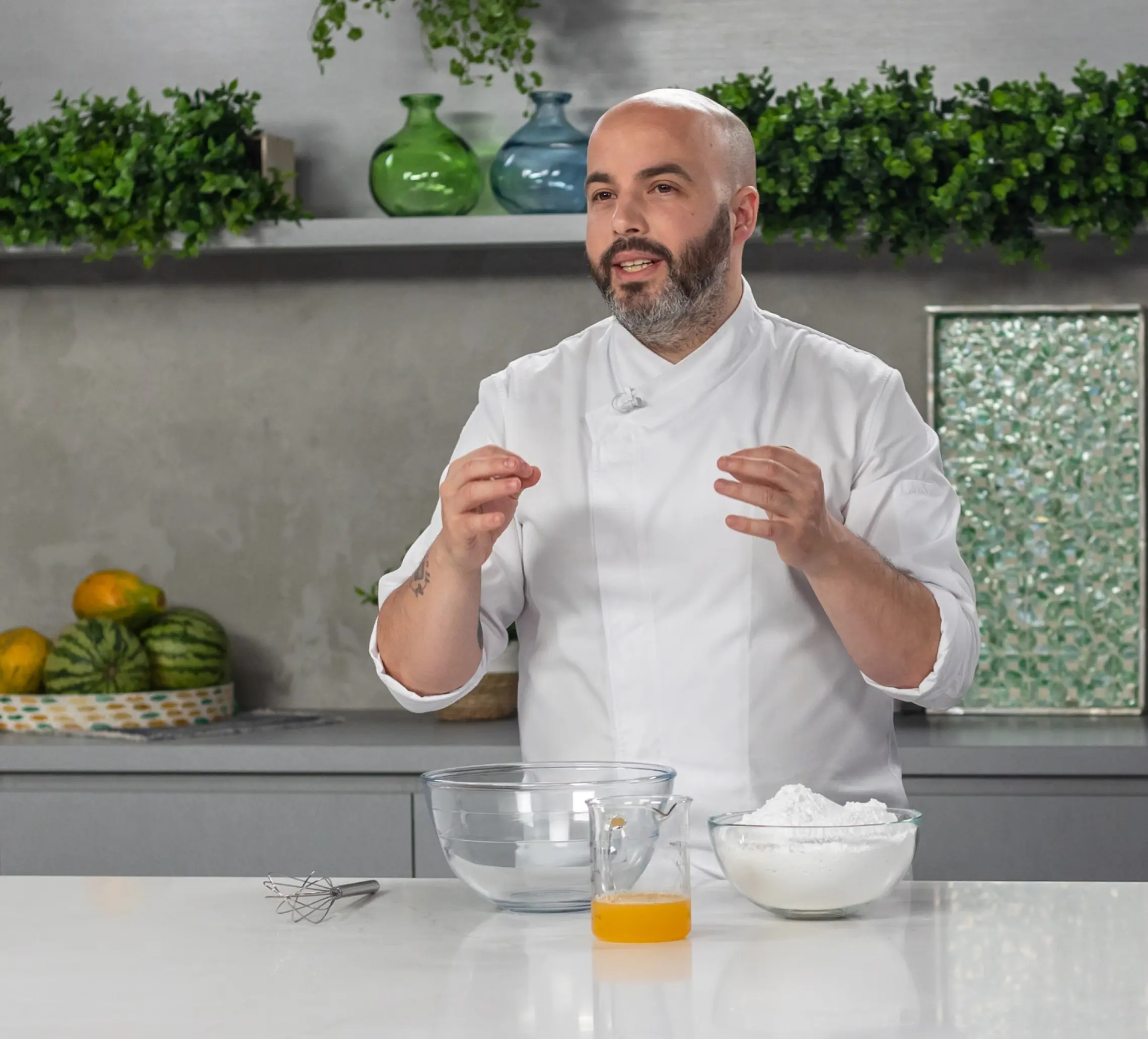What is Caramel?
Caramel is a sweet confection made by heating sugar until it melts and browns, resulting in a distinct flavor and color. It often includes butter and cream for richness and a smooth texture. This indulgent treat is enjoyed in various forms, from sauces drizzled over desserts to candies and confections.
Caramel is a beloved confection, known for its rich, buttery flavor and chewy texture. While sugar and fat are the primary ingredients, adding proteins to caramel can significantly enhance its qualities.
Importance of Proteins in Caramel
Understanding the role of proteins in caramel production can help both home bakers and professional pastry chefs achieve superior results. Adding proteins, often in the form of dairy products like cream or milk (or gelatin), to caramel recipes serves several important purposes:
- Texture and Creaminess: Proteins in dairy products contribute to the smooth and creamy texture of caramels. When combined with sugar and heated, these proteins help prevent the caramel from becoming overly crystallized and grainy, resulting in a velvety mouthfeel.
- Emulsification: Proteins have emulsifying properties, which means they help disperse fat molecules evenly throughout the caramel mixture. This contributes to a consistent texture and prevents the caramel from separating into distinct layers of fat and sugar.
- Flavor Balance: The proteins in dairy products can balance the intense sweetness of caramel by adding a slightly savory and rich flavor. This flavor contrast enhances the overall taste experience of the caramel.
- Preventing Crystallization: Caramelization involves the breakdown of sugar molecules into various compounds, including glucose and fructose. These compounds have a natural tendency to crystallize as they cool. Proteins can interfere with this crystallization process, helping to keep the caramel smooth and soft rather than becoming gritty.
- Stability: Proteins provide structural stability to caramels. They help bind the ingredients together and prevent the caramel from becoming too brittle or fragile.
- Reducing Boiling Over: When making caramel, the addition of cream or milk (or gelatin) can help reduce the risk of the mixture boiling over, helping control the formation of large bubbles that can lead to spills.
- Color and Flavor Development: The Maillard reaction, which is responsible for the browning and development of complex flavors in caramel, is enhanced by the presence of proteins. This results in a deeper color and a more intricate flavor profile.
Practical Tips for Adding Proteins to Caramels
- Choose the Right Protein Source: Heavy cream, milk, condensed milk, and gelatin all provide different levels of protein and can affect the final flavor and texture in unique ways.
- Monitor Cooking Temperature: To achieve the best results, cook the caramel at the right temperature to ensure proper protein denaturation and interaction with sugars.
- Balance Ingredients: Ensure the right balance of sugar, fat, and protein to prevent issues like crystallization or separation.
- Experiment with Additives: Consider using different types of dairy or protein powders to customize the nutritional content and texture of your caramel.
Conclusion
In summary, the addition of proteins, usually in the form of dairy products, to caramel recipes plays a crucial role in achieving a creamy texture, preventing crystallization, enhancing flavor, and contributing to the overall quality of the caramel confection. By understanding and utilizing the benefits of proteins in caramel making, both home bakers and professional pastry chefs can create superior caramel products that delight the senses.
June 7, 2024 By PastryClass




























